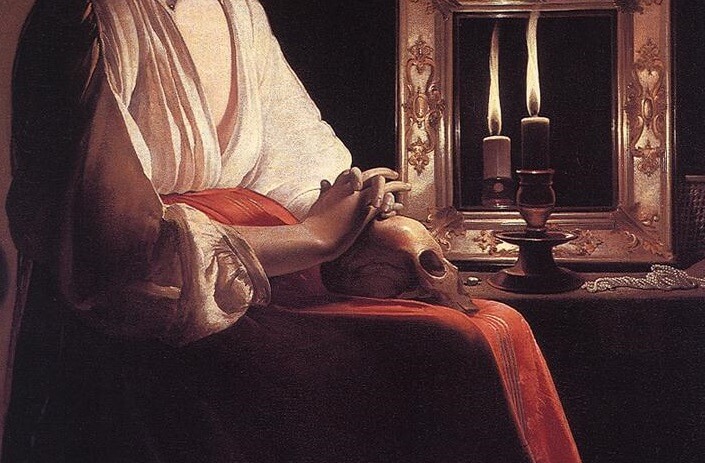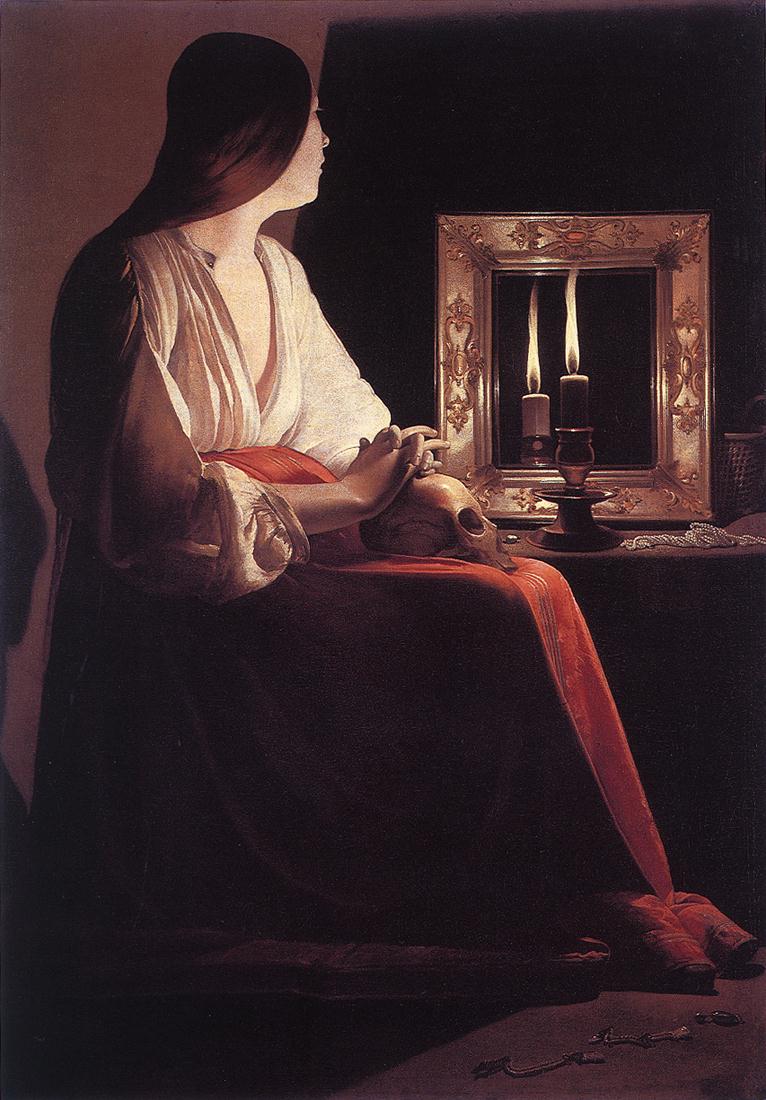Go And Sin No More

“Go and sin no more.”
While Mary Magdalene is not universally recognized as the woman caught in the act of adultery, most of the greatest artists of the West believe she was. The typical Magdalene painting shows a woman alone in the dark, deep in thought over one of Christ’s strangest private injunctions. What is a prostitute to make of the command to “sin no more”?
George de La Tour’s Penitent Magdalene knows that obedience to Christ’s command means the loss of her only source of income. However, she also mulls over the breadth of His command. What if she does sin again? Has she spent her only chance to “not be condemned,” or will there be more?

What is more, Christ has sent Magdalene away, for He did not say, “Follow me and sin no more,” but, “Go and sin no more.” For this reason, the penitent Magdalene is by herself. Why does Christ not tell her to follow? He withdraws from her, or rather, He asks her to withdraw from Himself, for she is not yet ready to be a follower. She has some obligation to the man (any man) who saved her life, and yet Christ would rather she follow the savior of her soul, a title singular to Himself. His command to “Go” is not a rejection of Magdalene, but a recognition of her autonomy. If she follows Him, she follows Him of her own free-will. Christ will not be Mary’s new handler, her new pimp.
In the painting, Christ is both at a distance from Magdalene, and yet He also fills the distance between Magdalene and Himself. De La Tour’s Penitent Magdalene embraces this paradox, for Christ is absent from the painting, but present in the new peace which is slowly emerging in her heart.

Joshua Gibbs
Joshua Gibbs teaches online classes at GibbsClassical.com. He is the author of How To Be Unlucky, Something They Will Not Forget, and Blasphemers. His wife is generous and his children are funny.











